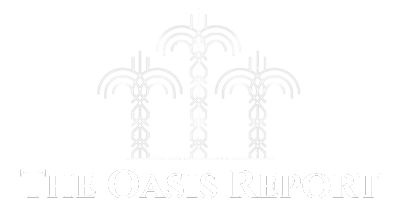Foreign subsidiaries’ lending up
Net interest margins falling
Consumer demand for mortgages, credit cards and personal loans as well as increased corporate and government borrowing helped most major UAE banks post double-digit rises in profits in the first quarter of this year.
The profit surge, which comes despite a greater tax burden on the sector, has supported a renewed rally in banking stocks. The share prices of the six top banks are up by an average of 17 percent this year to May 26, according to AGBI calculations.
Emirates NBD’s (ENBD) loan book expanded 3.5 percent in the first quarter versus the preceding three months. It sold AED18 billion ($4.9 billion) of new loans, of which half was through its foreign operations including those in Turkey, Saudi Arabia and India, according to Bahrain’s Sico Bank.
Similarly, First Abu Dhabi’s (FAB) loans grew 3.7 percent quarter on quarter. Of this lending, 40 percent came through its foreign units. FAB and ENBD are the UAE’s two biggest banks by assets.
“FAB’s loan growth was well-diversified, supported by increased exposure to mortgage and trade finance lending,” Sico wrote in a report this week.
UAE banking sector loan growth, which had been sluggish, has accelerated in the past few years, says Rahul Bajaj, director of Mena equity research at Citi in Dubai.
This is due to increased borrowing by Abu Dhabi government entities and rising demand from retail customers for mortgages, credit cards and personal loans, he explains. Retail lending growth is predominantly a reflection of the UAE’s expanding population, he adds.
The UAE’s big two banks have scope to expand lending should there be demand. The loan-to-deposit ratios of ENBD and FAB are 75 and 65 percent respectively. Their liquidity ratios – a measure of their ability to withstand a short-term financial crisis – are far above regulatory minimums, Sico wrote.
“Among the major UAE banks, we prefer primarily ENBD due to its more attractive valuation relative to FAB, although we believe both institutions present a favourable and stable outlook over the medium term,” the Sico report states.
Sico’s bullish outlook for ENBD comes despite the Dubai lender’s first-quarter net profit falling 7.3 percent year on year to AED6.2 billion ($1.7 billion). Its tax bill nearly doubled to AED1.5 billion and impairment reversals declined.
Perhaps more importantly, the bank’s main metrics improved: net interest income rose 14 percent to AED8.5 billion and fees and commissions income grew 14 percent to AED1.9 billion.
ENBD’s first-quarter net profit was also 20 percent above Citi’s forecasts. The Dubai bank outperformed thanks largely to non-interest revenue and low provisions, explains Bajaj.
“These factors have a fair amount of one-offs so we can’t extrapolate Q1 results to forecast full-year profits,” says Citi’s Bajaj. “Most likely, ENBD’s return on equity will be weaker in the rest of 2025.”
ENBD has set aside more money in case loan defaults rise. Known as the non-performing loan coverage ratio, ENBD’s is 158 percent. That compares with FAB’s 92 percent, according to Sico calculations.
In year-on-year changes in quarterly net profit, other UAE banks eclipsed ENBD. FAB’s first-quarter profit rose 24 percent to AED5.1 billion thanks to a near-tripling of its gains on investments and derivatives.
Abu Dhabi Islamic Bank, Dubai Islamic Bank and Abu Dhabi Commercial Bank (ADCB) reported first-quarter profit rises of 19.1, 10.4 and 14.3 percent respectively.
Net interest margins at UAE banks are declining. This is not only due to rising funding costs – the cause of shrinking bank margins in Saudi Arabia – but also because of other, bank-specific factors.
ENBD’s margins have come under additional pressure from its Turkish subsidiary. ADCB’s greater focus on lending to government-related entities is positive for its loan growth, but detrimental to its margins because such low-risk borrowers demand reduced rates.



